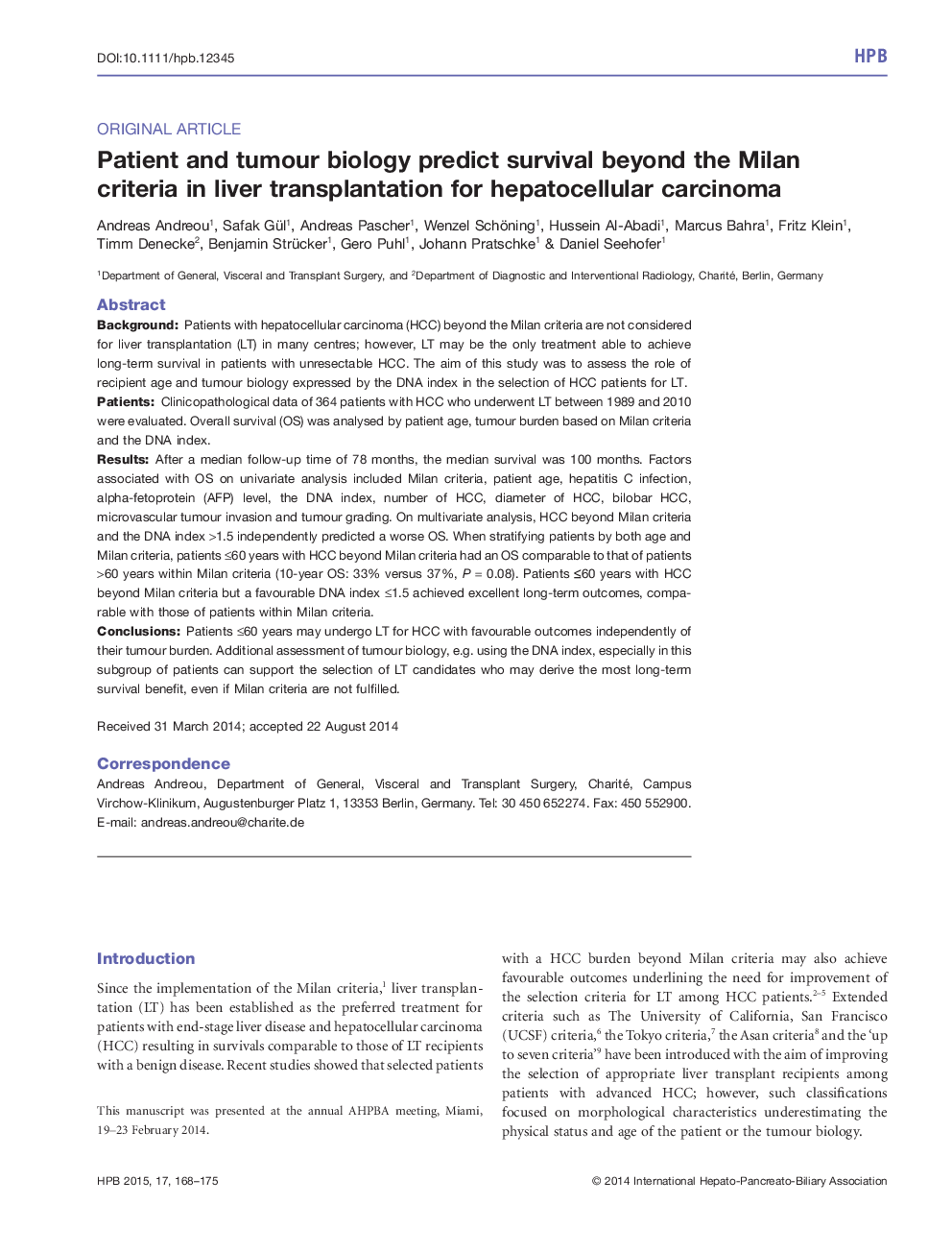| کد مقاله | کد نشریه | سال انتشار | مقاله انگلیسی | نسخه تمام متن |
|---|---|---|---|---|
| 3268948 | 1208105 | 2015 | 8 صفحه PDF | دانلود رایگان |
BackgroundPatients with hepatocellular carcinoma (HCC) beyond the Milan criteria are not considered for liver transplantation (LT) in many centres; however, LT may be the only treatment able to achieve long‐term survival in patients with unresectable HCC. The aim of this study was to assess the role of recipient age and tumour biology expressed by the DNA index in the selection of HCC patients for LT.PatientsClinicopathological data of 364 patients with HCC who underwent LT between 1989 and 2010 were evaluated. Overall survival (OS) was analysed by patient age, tumour burden based on Milan criteria and the DNA index.ResultsAfter a median follow‐up time of 78 months, the median survival was 100 months. Factors associated with OS on univariate analysis included Milan criteria, patient age, hepatitis C infection, alpha‐fetoprotein (AFP) level, the DNA index, number of HCC, diameter of HCC, bilobar HCC, microvascular tumour invasion and tumour grading. On multivariate analysis, HCC beyond Milan criteria and the DNA index >1.5 independently predicted a worse OS. When stratifying patients by both age and Milan criteria, patients ≤60 years with HCC beyond Milan criteria had an OS comparable to that of patients >60 years within Milan criteria (10‐year OS: 33% versus 37%, P = 0.08). Patients ≤60 years with HCC beyond Milan criteria but a favourable DNA index ≤1.5 achieved excellent long‐term outcomes, comparable with those of patients within Milan criteria.ConclusionsPatients ≤60 years may undergo LT for HCC with favourable outcomes independently of their tumour burden. Additional assessment of tumour biology, e.g. using the DNA index, especially in this subgroup of patients can support the selection of LT candidates who may derive the most long‐term survival benefit, even if Milan criteria are not fulfilled.
Journal: HPB - Volume 17, Issue 2, February 2015, Pages 168–175
